How to install a VPN on Nvidia Shield

Whether gaming or streaming video, Nvidia Shield is a great Android media console for accessing all types of content from around the world. You can access even more content, improving your security and privacy with a VPN or virtual private network.
In short, there are three ways to set up a VPN on Nvidia Shield, depending on what your VPN provider offers:
- Get a VPN app from an official app store. This is the easiest method. If your VPN provider creates an Android TV app, you can download and install it from Google Play or another app store like Amazon.
- Sideload an Android VPN app from an APK file. Nvidia Shield runs on an Android TV version. Many VPN providers don't build Android TV apps but build Android apps for smartphones and tablets that run on a Shield. You can download the APK installation file from your provider's website onto a USB drive, move it to your Shield and install it from there. This process is called "side loading".
- Manually configure VPN using a third-party application. If your provider's app is not an option, you can use a third-party VPN app to manually configure connections to your VPN provider's servers.
In this article, we'll show you how to configure a VPN application on Nvidia Shield using all three methods. One of them should work for you.
Why set up a VPN on Nvidia Shield?
A VPN encrypts all Internet traffic from a device and routes it through a server at an intermediate location of your choice. This has two useful effects:
- First, your IP address is masked by that of the VPN server. IP addresses are unique device identifiers used by many websites and services to determine your location. By using VPN to change your IP address, you can access content normally only available in certain countries or regions. This includes streaming video channels like Netflix, Hulu, HBO Now, Amazon Prime Video, Vudu, and BBC iPlayer.
- Second, a VPN significantly improves your security and privacy. Encryption prevents hackers and your Internet service provider from eavesdropping on your Internet activity. Some ISPs may disapprove of using Kodi or Plex, for example, and choke your bandwidth when you use them. Using a VPN means your ISP cannot distinguish the streaming video from any other traffic, allowing data to flow freely.
Our main recommendation is ExpressVPN. It's fast, secure, private and an Android TV app is available on Google Play. ExpressVPN is a favorite among Kodi and Plex users, thanks to its user-friendly interface for game control and remote control, and the fact that it works with any add-on or channel you might use on it. ExpressVPN always has some servers that can bypass Netflix's proxy error and Hulu's VPN blocking, along with most of the other VPN bans on streaming sites.
BUSINESS ALERT: 3 months free with ExpressVPN annual plan
ExpressVPN includes a 30-day money-back guarantee, so you can try it risk-free and cancel if you're not satisfied.
How to install a VPN on Nvidia Shield
The method used to set up a VPN on Nvidia Shield depends on your VPN provider. Although Nvidia Shield has access to Google Play, it can only access apps created specifically for Android TV - a special version of Android for media consoles and set-top boxes. The selection of apps is much more limited than that available for Android smartphones and tablets.
So if your VPN provider has made your app available for Android TV, that's great. This will be easy for you. If your provider doesn't have an Android TV app yet, don't worry. You can still get the app on your Nvidia Shield, but it will take a little more work.
While ExpressVPN is our preferred choice, we've put together 4 other options in our list of best VPNs for Nvidia Shield.
Method 1: Google Play (preferred)
If your VPN provider creates an Android TV app, this process should be very familiar to anyone who has used an Android device with Google Services. The IPVanish app comes with the flavor of Android TV, so we'll use it as an example in this tutorial.
- Go to ExpressVPN (or your VPN provider of choice) and sign up for an account.
- Turn on your Nvidia Shield and go to the Google App Store.
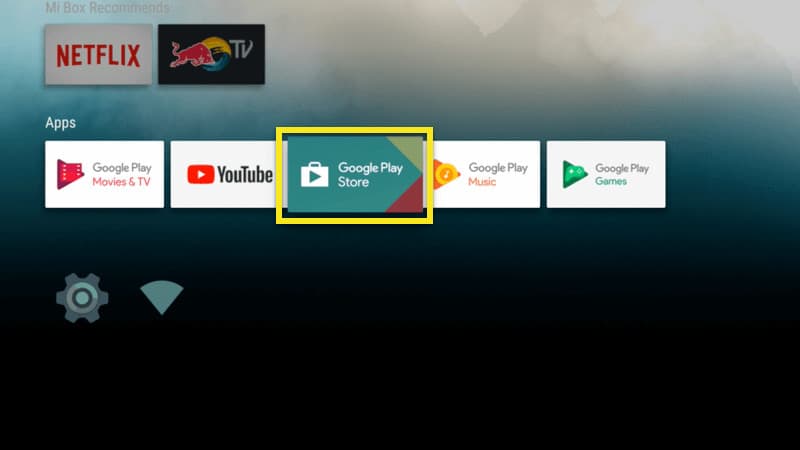
- Run a search for ExpressVPN and the app should be the first choice to come up.
- Click on Install to download and install the application. Accept the terms and permissions.
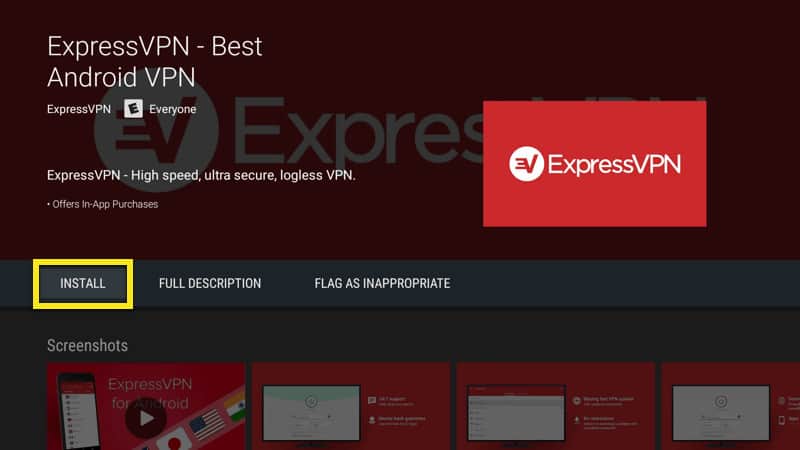
- Launch the VPN app by clicking the Open button on Google Play or clicking the app icon on the Nvidia Shield homepage.
- Enter the login credentials you created when signing up for the VPN.

- Select a server at a location of your choice and press Connect .
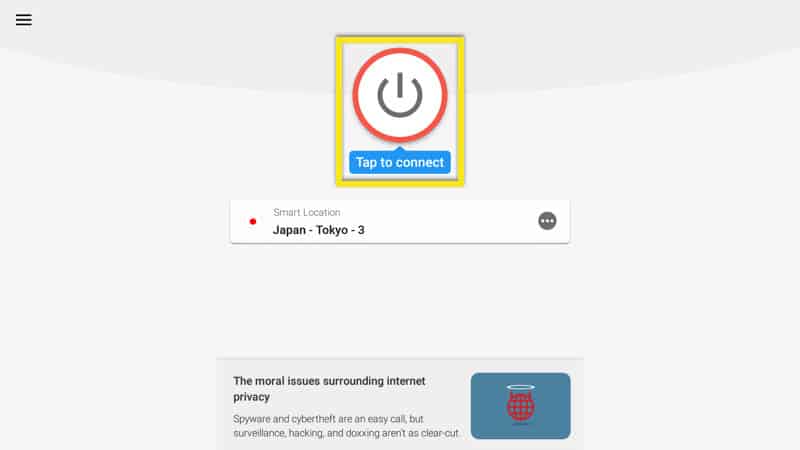
- Once the connection is established, you can leave the VPN app running in the background while using other apps, playing games, and streaming video.
That is all! You should receive app updates as they are posted to the Google Play store.
Method #2: Sideloading
If your VPN provider creates an app for Android, but it's not specifically for Android TV, you'll need to use a workaround to install it. This workaround is called "side loading". There are several ways to load an app sideways on Android, but we'll show you what we think is the simplest method. In this tutorial, we'll use the ExpressVPN phone app as an example, although the provider now offers an Android TV app.
- Go to ExpressVPN (or your VPN provider of choice) and sign up for an account. Comparitech readers can use this link to get an additional 3 months free with the ExpressVPN annual plan for a total of 15 months. The offer includes a 30-day quibbles-free money-back guarantee so you'll receive a full refund if you're not satisfied.
- Using a desktop or laptop computer, go to the VPN provider's website and look for the option to directly download the app's APK. An APK is an Android package file that contains everything needed to install the app. Download it to your hard drive.
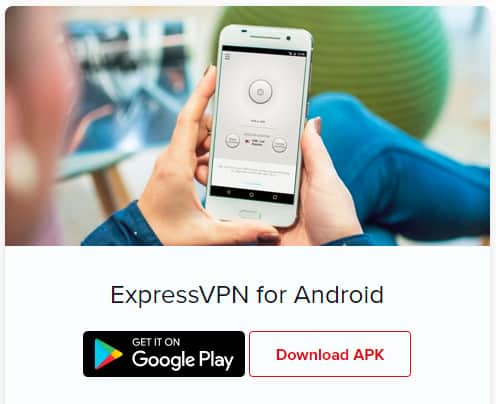
- Once the download is complete, move the APK file to a USB drive. The VPN app's APK files are usually small, so a simple flash drive is all it takes. Safely eject the drive when finished.
- Turn on your Nvidia Shield and open the Settings menu. Then go to Security and Restrictions.

- Enable Unknown Sources, which allows you to install apps outside of Google Play. Press OK when the warning appears.
- Go back to your home screen and open the Google App Store.
- Run a Search for File Manager from ES File Explorer and select the application with the same name.
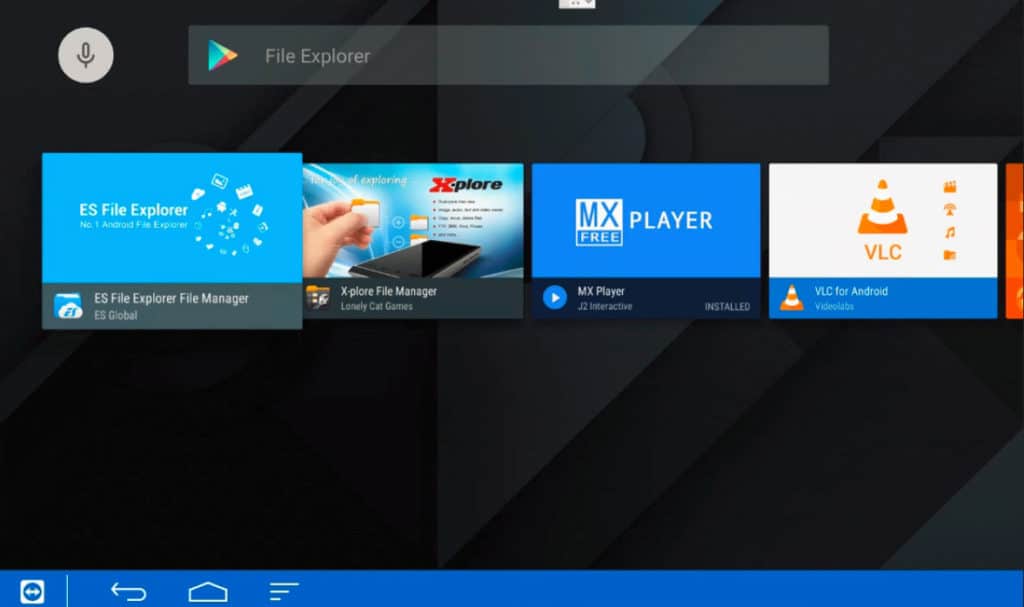
- Click Install to download and install ES File Explorer. Accept the terms and permissions.
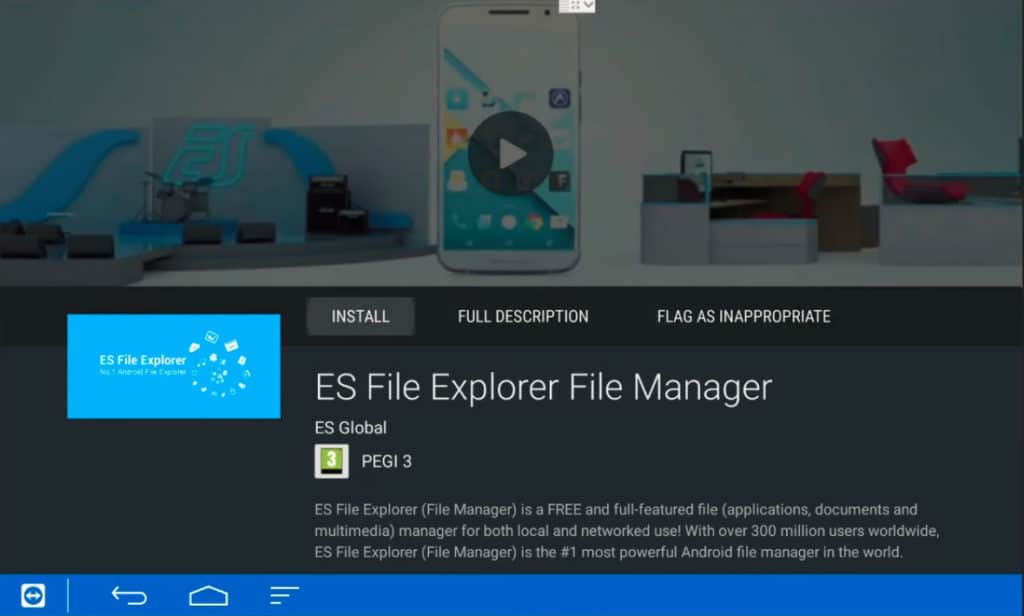
- Once ES File Explorer is installed, plug the USB drive with the APK file into the Nvidia Shield's USB slot.
- A popup should appear asking if you want to open the USB drive using ES File Explorer. You can check the box to use the app by default whenever you connect this device if you wish, but for our purposes, we only need to use the USB drive once. Click OK.

- ES File Explorer will launch. On the left sidebar, click Location , then scroll down to select your USB drive from the drop-down list.
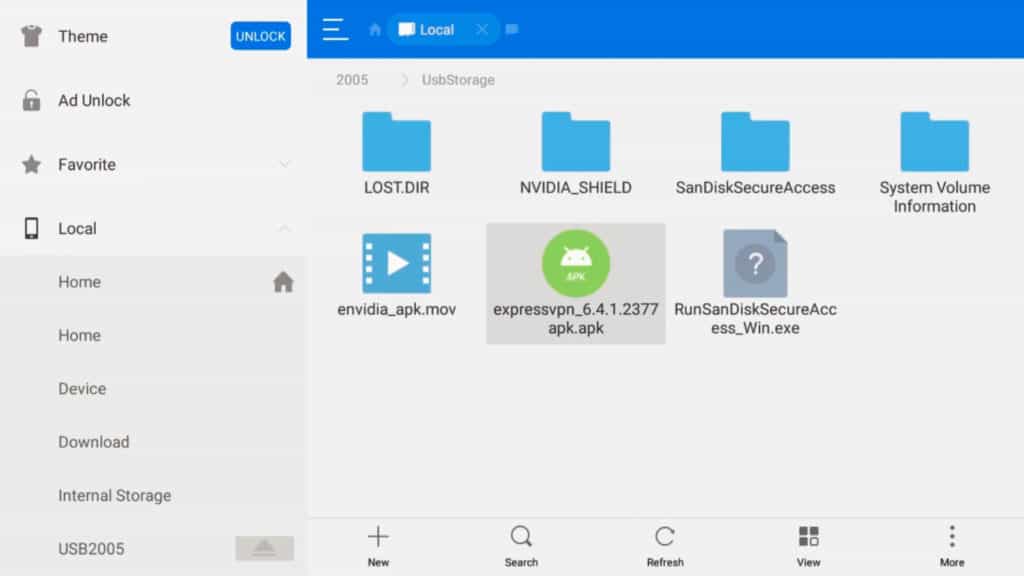
- Browse to where you saved the APK file on your jump drive and select it. Click Install, then Install again to accept the permissions.

- When the installation is finished, select Open to launch the VPN application. The app must also be accessible from the home page.
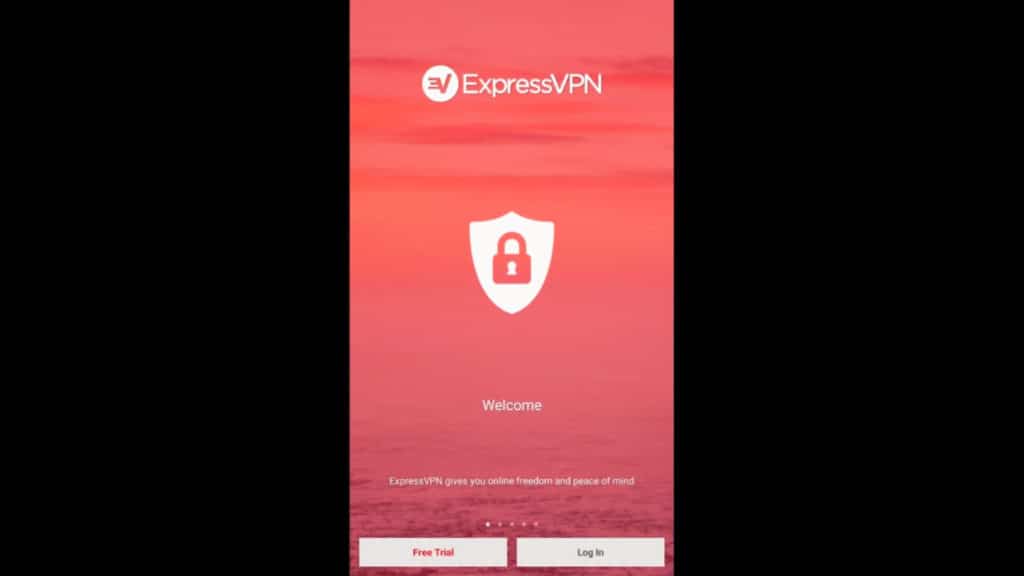
- Log in to your VPN app using the credentials you created in step 1.
- Select a server at the location of your choice and click Connect.
- Once the connection is established, you can leave the VPN app running in the background while using other apps, playing games, and streaming video.
Now that you're done, it's okay to safely remove the Nvidia Shield USB drive. Be warned, however, that applications installed using this method are unlikely to receive updates, so it's up to you. To update a sideloaded app, simply go through this process again to replace the old version with the new one.
You can also download the APK file directly to your Nvidia Shield using ES File Explorer's built-in web browser, but unless you have a keyboard and mouse set up, we found the USB drive option easier. Browsing web pages and typing is an issue with the default controller. If you don't have a USB drive or laptop handy, that works too.
Method 3: Manual configuration using OpenVPN for Android
Our final option uses an open-source third-party application to set up VPN connections to your provider's servers. Many VPN providers offer OpenVPN configuration files to customers on their websites for download. They will usually be appended with a .conf or .ovpn file extension. There is usually one configuration file per server or server location.
IPVanish, for example, allows you to download all your OpenVPN configuration files from here. They're small, so download as many as you like onto a USB drive.
See how to manually configure OpenVPN in Nvidia Shield:
- Go to your VPN provider's website and download OpenVPN configuration files for the server locations you want to connect to. Also, download the certificate file, which will have a .crt extension.
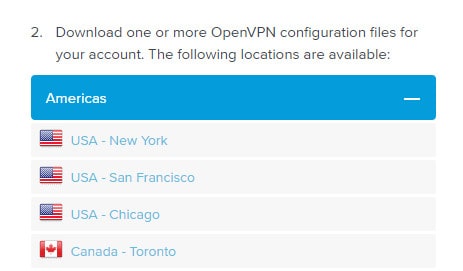
- Transfer OpenVPN files to your Shield. There are a few ways to do this, but a USB drive is the most straightforward. See the instructions in the previous section on how to do this. You will need to download and install ES File Explorer or FS File Explorer from Google Play to your Shield, use it to move files to Shield.
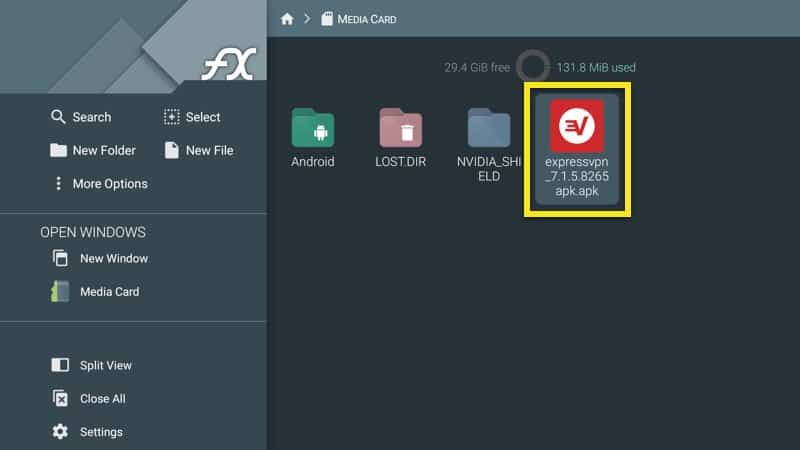
- Download and install OpenVPN for Android from Google Play Store for your Shield.
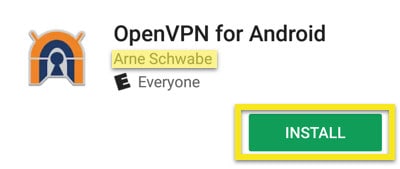
- Open OpenVPN for Android. In the upper-right corner, click the Import button icon, which is a white square with an arrow pointing down.

- Browse to where you put the OpenVPN configuration files and click on one to import it. You may encounter an error due to a missing certificate. Click and don't worry about it yet.
- I go to the Profiles tab, where you should now see the OpenVPN profile you just imported. Click on the pencil icon to edit the configuration.
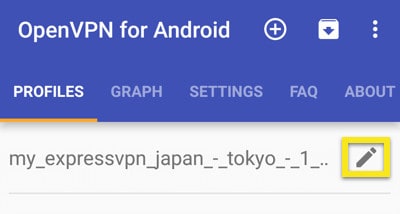
- Click the Select button on the right, navigate to the .crt certificate file and click on it.
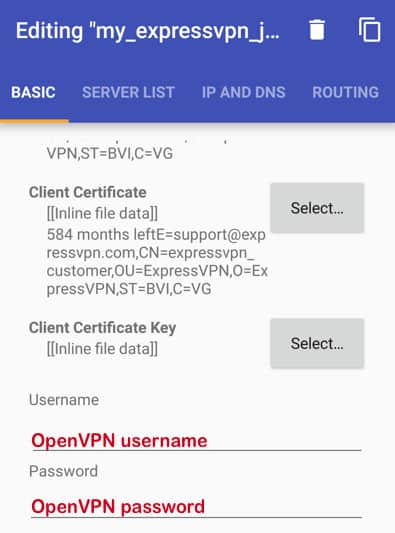
- Optionally, you can also enter your VPN account username and password here. Otherwise, you will be prompted to enter them each time you connect. Ignore the rest of the settings unless your VPN provider explicitly tells you to change them.
- Repeat steps 4 through 8 for each configuration file you want to import.
- Go to the Profiles tab and choose the one you want to connect to. After a few seconds, the VPN connection will be established.
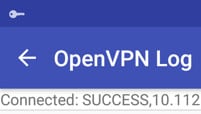
Please note that these are comprehensive instructions and the process may differ slightly depending on your VPN provider. Consult your provider's customer service department if you encounter any problems.
What about third-party app stores?
If an Android TV version of your preferred VPN app is not available on Google Play, we recommend method 2, side loading as described above. You might be tempted to simply download the app from a third-party app store, but we advise against it.
Third-party app stores generally don't have a rigorous process for verifying apps that arrive in their markets. They may not be up to date or they may have been modified to contain malicious code such as adware and malware.
Whenever possible, always use Google Play or get the APK file directly from the app editor. In this case, this is the VPN provider.
“NVIDIA Shield Tablet with Wireless Controller” by Maurizio Pesce licensed under CC BY 2.0


